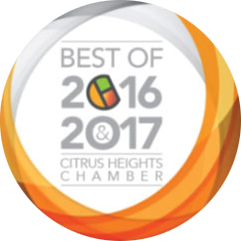Here are several powerful business tax-deduction strategies that you can implement before the end of
2020:
Delaying Income
Stop Billing Customers, Clients, and Patients
Stop billing your customers, clients, and patients until after December 31, 2020. (We assume here
that you or your
corporation is on a cash basis and operates on the calendar year) Customers, clients, patients, and insurance
companies
generally don’t pay until billed. Not billing customers and patients is a time-tested tax-planning strategy that
business owners have used successfully for years.
Maximizing & Accelerating Deductions
Prepay Expenses
IRS regulations contain a safe-harbor rule that allows cash-basis
taxpayers to prepay and deduct qualifying expenses up
to 12 months in advance without challenge, adjustment, or change by the IRS.
For a cash-basis taxpayer, qualifying expenses could include lease
payments on business vehicles, rent payments on
offices and machinery, and business and malpractice insurance premiums.
Buy Business Equipment
With bonus depreciation now at 100 percent along with increased limits for Section 179 expensing,
buy your vehicles, equipment or
machinery and place it in service before December 31, 2020 and get a deduction for 100 percent of the cost in 2020.
Qualifying bonus depreciation and Section 179 purchases include new and used personal property such as machinery,
equipment, computers, desks, chairs, and other furniture (and certain qualifying vehicles).
Use Your Credit Cards
If you are a single-member LLC or sole proprietor filing Schedule C for your business, the day you
charge a purchase to
your business or personal credit card is the day you deduct the expense. Therefore, as a Schedule C taxpayer, you
should
consider using your credit card for last-minute purchases of office supplies and other business necessities.
If you operate your business as a corporation, and if the corporation has a credit card in the
corporate name, the same
rule applies: the date of charge is the date of deduction for the corporation.
But if you operate your business as a corporation and you are the personal owner of the credit card,
the corporation
must reimburse you if you want the corporation to realize the tax deduction, and that happens on the date of
reimbursement. Thus, submit your expense report and have your corporation make its reimbursements to you by December
31, 2020.
Other Year-End Housekeeping Items
Health Insurance for >2% S-Corp Shareholders
If you pay for health insurance through, or are reimbursed by your S Corporation, the correct tax
reporting for any
shareholder that owns more than 2% of the company is to include the health insurance paid on their 2020 Form W-2 in
Boxes 1 & 16 and Box 14. The health insurance payments are not subject to payroll taxes. All you need to do is inform
whoever prepares your payroll that the corporation paid $XX amount of health insurance for the shareholder. The
payroll
service should know what that means and should then include the amounts on the shareholder’s W-2, as appropriate,
added
to wages reported in Boxes 1 & 16, with the amount of health insurance also reported in Box 14. If this is not done,
the
IRS position that is health insurance will be treated as an itemized deduction subject to a 7.5% of AGI limitation.
(Please make sure the payroll is done correctly to include the health insurance premiums for >2% Shareholders on their
2020 Form W-2).
Personal Use of Company Car (PUCC)
If you reimburse yourself for auto mileage from your company, then read no further on this subject,
as what follows will
not apply to you. However, if your corporation pays for all your automobile expenses, you are required to include the
PUCC fringe benefit amount in your W-2. It is considered taxable income to you subject to payroll taxes, and it will
also appear in Box 14. Including this fringe benefit allows you to write-off all auto expenses on the business. The
calculation for this fringe benefit is not terribly complicated – all you need to know is the approximate value of the
auto when it was placed in service, and the number of miles driven during 2020 – both personal and total mileage for
the
year. Click links to download a worksheet and table that will allow you to make this calculation. An alternative
calculation is
to use the “commuting value method” which is to include $3/day as compensation, or $780 for the year. Including PUCC
in
your W-2 will show that you are complying with the fringe benefit rules, and if this does apply to you, we recommend
you
include the appropriate amount on your W-2. You will need to inform your payroll service of the PUCC fringe benefit
that
should be included on your 2020 W-2. Alternatively, you can reimburse the company for the amount of personal use and
not
include any amount as a fringe benefit.
Download PUCC Worksheet
Download PUCC Table
Reimburse Yourself
Please be sure to reimburse yourself for expenses that you may have paid on behalf of the
corporation during the year.
Related expenses may include travel, business meals and mileage, supplies, postage, phone, home office expenses, dues
and subscriptions,
etc. The reason it’s important to do this is so that the expenses are captured and deducted in full at the corporate
level. Otherwise you may be leaving deductible expenses on the table, because if you try to deduct them as employee
business expenses on your individual return, they are considered miscellaneous itemized deductions and are no longer
deductible for federal tax purposes. Click here for an Excel
template to organize and help document your expense
reimbursement, and then all you have left to do is cut yourself a check or offset prior distributions you may have
already made to yourself.
Download Expense Reimbursement Template
Unemployment (without Withholding)
If you have been receiving unemployment checks this year and have not been withholding federal or
state income tax,
consider reviewing your income for the year to determine if you should make fourth quarter estimated tax payments.

